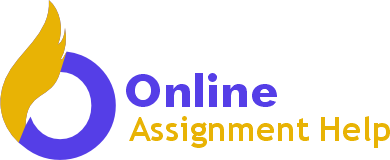Table of Contents
5OS07 Well-being at Work Questions
Task One – Briefing paper for the senior leadership team
a) Critically evaluate at least 2 issues and 2 key theories in wellbeing at work and explain their relevance within your workplace of choice. (AC 1.1)
b) Define wellbeing and using specific organisational examples, explain and justify how wellbeing can be managed to support organisational goals. (AC 1.2)
c) Assess the value of adopting wellbeing practices in organisations, supported by research sources. (AC 1.3)
Task Two – Review of organisational practice
Following your briefing paper, the senior leadership team have agreed that the People team can proceed with the project. You have been asked by the People Director to develop the wellbeing programme for the organisation, including the activities required to implement it successfully. In doing so, you’re required to present a report which reviews the range of practices currently in place, considering what will be most beneficial for the organisation, with rationale for your thinking.
Use the structure below in your response:
Section 1
Present an overview of how different organisational contexts shape wellbeing approaches.
- Analyse the internal and external factors impacting on the organisation and identify the top 2-3
areas that the organisation should focus on. Support your analysis with relevant research
and/or organisational examples. (AC 2.3) - Using at least 2 examples, explain how wellbeing can be integrated with other areas of people practice. (AC 2.2)
Section 2
- From your analysis, explore a range of wellbeing initiatives and assess the value they can add to meet organisational needs.
- Consider existing organisational practices and determine the value they add in meeting
organisational needs. (AC 3.1) - Recommend a minimum of 3 suitable wellbeing initiatives and present an implementation plan which will meet your organisational needs. Justify your thinking, including research and/or organisational examples. (AC 3.2)
Section 3
- Explain the steps needed to ensure successful implementation of the wellbeing programme. (AC 3.3)
- Outline the steps which can be taken to support effective stakeholder contribution and how this can impact on improved wellbeing at work. (AC 2.1)
- Explain the ways in which a wellbeing programme can be evaluated and monitored. Assess and identify specific measures to review the quality of each recommended initiative, justifying your thinking. (AC 3.4)
5OS07 Assignment Answers
AC1.1
Workplace well-being has become critical to maintaining workforce productivity, engagement, and resilience. At Orchard Group, with increasing absences, performance issues, and high turnover, investment in a well-being program is not just preventative but essential for workforce sustainability and ensuring that high-quality care can be delivered. This section critically evaluates absenteeism and burnout as key issues. Then, it applies two foundational theories in workplace well-being: Maslow’s Hierarchy of Needs and the Job Demands-Resources Model, which demonstrate the relevance of a well-being initiative for Orchard Group.
Key Issues in Well-being
Absenteeism
Absenteeism among frontline workers disrupts the continuity of services and adds to the operational burden, particularly in a care home environment that necessitates consistent staffing levels for resident well-being. The numerous cases of absenteeism, combined with stress, challenges to physical health, and poor work-life balance, probably have affected the workforce of Orchard Group. Well-being interventions can help reduce absenteeism through support for mental health or flexible scheduling that reduces stress, thus improving attendance and maintaining service quality (Thomas et al., 2020).
Burnout
Burnout refers to emotional exhaustion and degradation in performance. This is common in health care because health workers operate in an emotionally and physically demanding environment. Caregiving at the frontline level in care homes is particularly demanding, and staff are inclined to burnout (Rusminingsih et al., 2020). In fact, because of this, Orchard Group has seen an increase in underperformance. Approaches that minimise workload pressures, provide psychological support, and promote recovery will help reduce burnout by enhancing job satisfaction and improving work engagement and overall productivity.
Theoretical Frameworks in Well-being
Maslow’s Hierarchy of Needs
Maslow’s theory is that people have to fulfil certain needs: physiological, safety, social, esteem, and self-actualisation for them to reach their full potential (Dar and Sakthivel, 2022). In the Orchard Group, employees need satisfaction of lower-level needs, safety and security, decent compensation, and stable scheduling. Higher-level needs, such as belongingness and recognition, can be furthered through expanding existing benefits, such as creating social support groups or recognising contributions through various awards. Motivation and job satisfaction can be heightened by attending to these needs more holistically.
Job Demands-Resources (JD-R) Model
The JD-R Model emphasises a need for job demands to be balanced by job resources. Given the high demands put on the frontline workers and a shortage of certain resources in Orchard Group, it is most likely to contribute to burnout. Improvement in job resources may include more training, managerial support, and access to counselling that could dampen the negative impacts of job demands. The underlying message of this model is to build a work environment that makes people resilient and not stressed (Lesener et al., 2019).
AC 1.2 Defining Well-being and Its Impact on Organisational Goals
Well-being is the state of being in such a condition where one feels physically, mentally, and socially in very good health, thereby being able to perform optimally in one’s personal and professional life (Pressman et al., 2020). In the workplace, well-being covers job satisfaction, work-life balance, psychological support, and safety; therefore, it provides an enabling environment that builds employee resilience, engagement, and productivity. Well-being management effectively aligns with organisational objectives because a decrease in absenteeism, a rise in performance level, and an increase in retention rate will directly impact an organisation’s success.
Managing Well-being Through Organisational Practices
One of the best ways to manage well-being is by addressing mental health, a vital component contributing to performance and morale. For example, Unilever has implemented stimulating mental health programs involving stress management workshops and counselling access, reducing absenteeism and higher productivity (George, 2024). Through mental health resources, Unilever invests in ensuring the staff is appropriately supported and cushions any stress-related absences that can disrupt the workflow and affect service delivery. All these initiatives reflect the value of managing mental health as an important well-being feature within an organisation, placing the bottom line in tune with performance and reducing operational costs.
Physical health is another essential aspect of well-being that organisations can manage to support their objectives. For instance, Google provides on-site physical fitness centres, healthy meal options, and wellness programs promoting a healthy lifestyle (Heinen and Darling, 2019). These have contributed to a good culture at the workplace, a more satisfied employee, and increased output. Supporting employees’ physical well-being reduces fatigue, illness, and absenteeism, equipping a more active work team that is better capable of meeting the organisation’s high standards of innovation and productivity.
Well-being Policies for Work-Life Balance and Job Satisfaction
Other aspects of work-life balance activities also help in managing well-being. When Microsoft Japan experimented with a four-day workweek, productivity went up 40%, and so did employee satisfaction (Baudrand et al., 2018). Through this, it can be explained that when organisations support work-life-enhancing well-being and well-being but also motivate and strengthen the drive for the highest productivity. Accommodating workplace flexibility policies can enable organisations to build a satisfied workforce, which will be better equipped to achieve strategic goals with higher levels of engagement and lower incidences of burnout.
Effective well-being management for organisations thus contributes to the organisational objectives by creating a productive, resilient, and loyal culture. Organisations would understand and attend to well-being in its various dimensions-mental, physical, and work-life balance-and build a healthier workforce that the organisation needs as it pursues its strategic objectives about sustainability, performance, and innovation.
AC 1.3 The Value of Adopting Well-being Practices in Organizations
Well-being practices have gained significant momentum as a necessary tool to improve employees’ health and involvement in organisational success. Indeed, structured well-being initiatives can be measured in productivity gains, reduced absenteeism, and improved employee satisfaction. This is particularly relevant for organisations like Orchard Group, where well-being challenges directly impact service quality and employee retention.
Enhanced Productivity and Reduced Absenteeism
Research emphasises that employee well-being programs translate directly into increased productivity and reduced absenteeism. For instance, a study by PwC (2021) found that organisations prioritising employee mental and physical health report a 17% increase in productivity. Certainly, this can be applied to the Orchard Group, as it has faced an alarmingly high number of absentees among its frontline employees, affecting service provision. Focused well-being programs targeting stress and burnout will help the organisation reduce absenteeism and guarantee full productivity, improving operational efficiencies and service standards.
Increased Employee Engagement and Retention
Well-being significantly influences employee engagement and loyalty. According to a study by Gallup, employees who feel supported by their organisation’s well-being initiatives are 59% more likely to remain with the company (Celestin et al., 2024). This goes a long way in benefiting the Orchard Group, presented with a 33% turnover rate. These will include activities such as support initiatives related to mental health that are inward in focus, frequent check-ins, and flexible scheduling- all in the interest of boosting the emotional and organisational commitment of the employee. These will foster emotional and organisational commitment among employees, reducing turnover costs and hence assuring workforce stability-continuous quality care for our residents.
Improved Organisational Reputation and Employer Branding
Those companies that invest in their employees’ well-being retain the best talents and fare better in the market. According to the World Health Organization, when organisations have well-being programs in place, they are considered more desirable to work for, thus decreasing recruitment costs while showing a better image of the organisation (World Health Organization, 2022). For Orchard Group, this is crucial, as a strong employer brand could help attract qualified staff who value support for their well-being, which is essential for maintaining care quality.
Financial Return on Well-being Investment
Studies indicate that workplace well-being initiatives offer a strong return on investment (ROI). For example, the WHO estimates that for every dollar invested in worker well-being, a return of approximately four dollars is gained through improved health and productivity (World Health Organization, 2022). It helps make the case for embracing well-being practices here at Orchard Group, as even a small investment in mental and physical health resources could pay great dividends in the form of reduced absenteeism, increased productivity, and higher staff retention.
AC 2.3 Internal and External Factors Impacting Orchard Group
The operational challenges and workforce needs of Orchard Group are influenced by various internal and external factors, particularly in residential care, where the well-being of its staff members will ascertain quality service provisions. These issues must be addressed if the organisation continues sustaining staff involvement, minimising staff turnover, and offering quality care to its service users.
Internal Factors
One major internal factor is the high rate of absenteeism and turnover among Orchard Group’s direct-care workers, which stands at 33%. This may indicate that stress levels in the workplace and resultant burnout are high, as indeed, often arise in the care sector due to the physical and emotional nature of the job demands. Furthermore, stress and high workload eventually lead to burnout, absenteeism, and disengagement (Chinguwo, 2023). Well-being programs will manage such stressors. For Orchard Group, more activities could include providing mental health support and flexible scheduling to remove the sting from such problems and make the workforce more resilient and engaged.
Another internal factor is the limited scope of current benefits, including gift vouchers, holiday pay, and basic recognition programs. Benefits like this couldn’t meet the mental and physical health needs usually experienced when performing work under stress. A more comprehensive well-being program, including access to mental health resources and stress management training, could provide the necessary support to enhance employee satisfaction and retention.
External Factors
Externally, the social care sector in the UK faces increased scrutiny regarding quality and staffing levels due to regulatory pressures. Assuring quality through the right staffing requires Orchard Group to focus on employees’ emotional well-being; shortages and excessive staff turnover tend to model lower quality. The increased cost of living also brings economic challenges to the employees. According to CIPD (2023), financial stress is among the top enablers of retention in the jobs in care. Hence, financial well-being can be addressed through support with budgeting or financial counselling as an initiative to improve satisfaction.
Key Focus Areas
Due to these factors, Orchard Group should be especially concerned with the following areas: mental health support, flexible working arrangements, and financial well-being. Meeting these needs could improve staff resilience, reduce turnover, and satisfy the expectations of regulatory bodies to help Orchard Group meet its mission of delivering consistent, high-quality care.
AC 2.2 Integrating Well-being with Other Areas of People’s Practice
Well-being integrated into various areas of people’s practice can provide a supportive workplace environment that is crucial to employee engagement and retention. It will be particularly relevant to Orchard Group since its operational staff face a high turnover rate and absenteeism ratio.
Performance Management
Well-being integrated into performance management allows an organisation to support employees more holistically. In addition to appraisal well-being checks, managers are in a position to explore with employees how they manage their workload and whether any issues negatively impact their mental health. For example, frequent performance reviews cover managing stress levels and adjusting workload accordingly; the manager could provide resources or delegate tasks where appropriate. According to studies, employees become more productive and highly engaged when they feel their mental health is looked after (Turner, 2019). In this respect, such integration, for instance, may reduce burnout and increase the quality of service delivery at Orchard Group, whose workers are exposed to high-stress care demands, as the workers will feel supported and valued.
Learning and Development (L&D)
Well-being programs can also be incorporated into Learning and Development programs (L&D). For example, resilience, mindfulness, and stress management training teach employees to cope with the more difficult aspects of their work. Workshops teaching strategies to handle stressful situations will be very helpful to Orchard Group’s front liners, for instance. Well-being training reduces the absenteeism rate and rate of turnover, as stated by the CIPD (2023). Thus, mental resilience development can help the staff of Orchard Group have better-coping mechanisms against the demands of their duties through better retention and morale.
By integrating well-being into performance management and L&D, Orchard Group will build a culture of holistic support for all employees. This will not only help enhance feelings of well-being for employees, but it is also in tune with the organisation’s goals of providing high-quality, compassionate care, as this would foster more stability and engagement in its workforce.
AC 3.1 Existing Organisational Practices and Their Value for Orchard Group
The well-being practices currently in place at Orchard Group include paying the national living wage, offering an employee assistance program (EAP), enhanced bank holiday pay, recognition schemes with gift vouchers, and long service awards complemented by access to high street discounts. While such initiatives will indeed create a platform of support for them, the value can be considered in light of the challenges this organisation confronts, namely high absenteeism, turnover, and burnout among its line staff.
Employee Assistance Program (EAP)
The EAP provides support resources and access to employee counselling, which is somewhat of a step in the right direction in addressing mental health and personal areas of challenges. Research by the Chartered Institute of Personnel and Development in 2023 explains that EAPs can reduce absenteeism while improving productivity since such attempts support employees through stressful periods. However, if the workers are unaware of the benefits or have some sort of stigma regarding seeking help with their mental health, EAP utilisation may be limited. Increased communication and de-stigmatisation may improve engagement in this valuable resource, aiding Orchard Group in mitigating stress-related absenteeism and turnover.
Recognition Programs and Long Service Awards
Gift vouchers for Orchard Group in recognition and long-service awards help the company appreciate the work and tenure put in by the employee. While such initiatives no doubt help boost the morale of employees, research studies suggest that when not entwined with deeper mechanisms of support, the outcomes on retention have been limited. Employees prefer constant appreciation for day-to-day work rather than occasionally receiving rewards (Hultman, 2020). These might be further enriched by adding regular, informal recognition to the programs, aiming to enhance satisfaction and job engagement, particularly in high-stress professions like caregiving.
Enhanced Bank Holiday Pay and High-Street Discounts
Enhanced bank holiday pay and high-street discounts can provide financial benefits that may improve morale and reduce some of the stresses associated with managing personal finances. While these benefits support employee satisfaction, they might not cover the full well-being needs. Indeed, studies found that financial benefits are essential but must be part of the greater well-being strategy in terms of mental health and flexible scheduling before they can impact retention and engagement (Dixon et al., 2019).
AC 3.2 Recommended Well-being Initiatives and Implementation Plan
To address Orchard Group’s high absenteeism, turnover, and burnout, the following well-being initiatives are recommended: mental health support, flexible scheduling, and financial well-being assistance. Each initiative aligns with Orchard’s needs for a more engaged, resilient workforce in the high-stress care sector.
Mental Health Support Program
Providing on-site or virtual mental health counselling and resilience training can empower employees to take responsibility for their stress. Mohanty et al. (2019) report that support for mental health reduces absenteeism and leads to higher engagement in care settings. Introducing workshops on mental health, with regular easy access to counsellors, will establish a supportive setting that will be particularly important for care workers managing emotionally challenging roles.
Implementation Plan: Partner with mental health professionals to provide bi-monthly counselling sessions alongside quarterly resilience workshops. Advertise availability through staff meetings, flyers, and emails to make more people aware of it in hopes of destigmatising receiving mental health support.
Flexible Scheduling
The flexible nature of schedules can allow staff to balance their personal and work commitments, and this factor may become important in retaining workers in high-stress environments. According to the CIPD (2023), flexible working decreases stress levels and increases job satisfaction, especially in caregiving work, where personal demands can be unpredictable. Flexibility could be achieved by implementing either shift swaps or part-time options.
Implementation Plan: Work with department managers to design a flexible scheduling system, enabling shift swaps and shorter shifts. Pilot the program in one care home, gather feedback, and expand based on results.
Financial Well-being Assistance
Financial education and support can decrease stress related to economic uncertainty, which is important for care workers who often live on limited incomes. The CIPD found in 2023 that financial support programs enhance retention and reduce stress. Introducing budgeting workshops and emergency financial assistance could help alleviate financial strain.
Implementation Plan: Offer quarterly budgeting workshops and establish a small emergency assistance fund. Communicate these options in onboarding sessions and through monthly emails to maximise participation.
Conclusion
These initiatives of mental health support, flexible scheduling, and financial assistance take care of each major challenge of Orchard Group in developing a stable and motivated workforce. Evidence from research underlines the advantages of every initiated initiative by suggesting that they will reduce turnover and improve care quality by supporting employee well-being holistically.
AC 3.3 Steps for Successful Implementation of Orchard Group’s Well-being Programme
- Establish Clear Objectives and Metrics
Successful programme implementation is about having defined objectives and clear, measurable outcomes. Specific metrics should guide the Orchard Group’s overall objectives on reducing absenteeism, turnover, and burnout, such as attendance rates, staff retention, and levels of engagement. According to the CIPD (2023), having measurable targets provides a pathway through which organisations can monitor progress with properly informed adjustments. The foregoing are the metrics for which a baseline should have been established before the program’s launch to enable Orchard Group to better appraise the change of impact and highlight areas for improvement.
- Secure Leadership Buy-In and Resources
A sustainable well-being program requires leadership support to be introduced. Marketing a long-term business case for improved retention and service quality can help approve the budget and resources for such initiatives. Support from the top leaders sends an important message about the seriousness of a well-being program that is taunted to all employees. Strong leader support for well-being programs increases participation and success rates (Dimoff and Kelloway, 2019). Orchard Group should engage leaders early, provide them with programme details, and encourage them to advocate for it in communications with staff.
- Communicate the Programme Effectively
Engagement will be driven by transparent communication about the programme’s benefits and how employees can participate. Orchard Group should communicate on several levels so that all employees-either on zero-hour contracts or other types-can understand the proposed initiative. Effective communication minimises stigma related to poor mental health and increases programme take-up (Carolan and de Visser, 2018). Noticeboards, regular updates, testimonials from participating employees, and easy access to information will help build awareness and trust in the programme.
- Train Managers and Provide Support
Training managers to recognise well-being issues and effectively utilise programme resources is essential for Orchard Group. For instance, managers should be trained to conduct well-being check-ins, manage flexible scheduling, and communicate financial support options within the organisation. In this regard, equipping managers with such skills will help Orchard Group institutionalise well-being practices at each interaction level, making life easy for the employees.
- Monitor and Adjust the Programme as Needed
Regularly evaluating the programme and gathering feedback will allow Orchard Group to make data-driven improvements. By reviewing metrics and collecting employee feedback, adjustments can be made to ensure ongoing alignment with organisational needs and staff satisfaction.
AC 2.1 Supporting Effective Stakeholder Contribution at Orchard Group
- Identify Key Stakeholders
First, the key stakeholders within the organisational setting should be identified. These include, for Orchard Group, Senior leadership, managers and supervisors, frontline employees, HR representatives and external partners’ networks – such as mental health service providers. The identification of the role and interests of each stakeholder will ensure their contribution is aligned towards the well-being programme objectives (Concannon et al., 2012). For example, senior leadership can provide strategic direction, while frontline managers offer valuable insights into day-to-day challenges affecting well-being.
- Foster Open Communication
Fostering an environment of open communication is essential to ensure stakeholders can contribute effectively. The organisation may hold periodic meetings, surveys, and feedback opportunities to hear from every level. For instance, Orchard Group can hold quarterly forums where employees can raise and share their well-being issues with suggestions. Studies show that if employees feel heard, their engagement and commitment to well-being initiatives increase (Ahmed et al., 2010). Open communication will allow managers to better understand the specific needs of frontline workers and adjust the programme accordingly.
- Involve Stakeholders in Decision-Making
Engagement of the stakeholders in decision-making secures well-being initiatives meeting specific employee and organisational needs. In this case, this may be through co-designing wellness workshops or a flexible scheduling policy with management and frontline workers. Not only does it strengthen relevance, but it also enhances employee ownership of such well-being initiatives. Studies have noted that participative decision-making results in higher employee satisfaction and reduces resistive behaviour to new policies (Ahmed et al., 2010).
- Provide Ongoing Support and Feedback
Continuous support for stakeholders throughout the programme implementation is crucial for maintaining engagement. This may include, for example, ongoing training for managers at Orchard Group to support the well-being of employees, as well as regular communications with employees on the positive impact associated with the program. Recognition of various stakeholder contributions towards a program’s needs furthers their commitment to its long-term success.
AC 3.4 Evaluating and Monitoring the Well-being Programme at Orchard Group
Key Performance Indicators (KPIs)
To efficiently evaluate the Orchard Group’s well-being program, key performance indicators should be put in place that allow the organisation to monitor and measure the success attained. Such KPIs may involve increased reductions in absenteeism, positive employee retention, increased engagement with well-being initiatives, and high satisfaction ratings among employees. These quantifying measures will indicate whether or not the well-being initiatives are meeting organisational needs. Research underlines that monitoring KPIs shows the value of well-being programs concerning employee outcomes, such as engagement and productivity (Lindberg et al., 2015). This means that, for example, if the mental health support initiative leads to reduced sick leave, it will prove that this initiative is effective.
Employee Feedback and Surveys
Employee feedback is a key indicator of the effectiveness of well-being initiatives. Regular satisfaction surveys or focus groups would prove beneficial in seeing how well-being programmes such as mental health support, flexible scheduling, and financial assistance are considered successful. This qualitative feedback provides an understanding of areas that may require improvement or further development. According to research, regular collection of employee feedback supports open Company culture and secures the relevance of initiatives regarding the continuous evolution of the workforce’s needs (Huebner and Zacher, 2021). Orchard Group may perform quarterly surveys and report findings with the intent to refine and improve wellness services.
Utilisation Rates
Other well-used monitoring and evaluation tools include tracking the utilisation rates of well-being initiatives. For example, how many staff members access mental health services or flexible scheduling options? This would yield some information on the initiatives’ effectiveness, whereby poor utilisation may show that barriers to participation or lack of awareness exist, and hence, the communication or delivery method needs changing. High engagement with well-being programmes is related to positive workplace outcomes such as increased retention and job satisfaction.
Exit Interviews and Retention Metrics
Exit interviews can provide insight into reasons for leaving the organisation and whether well-being factors have influenced their decision to leave. Before-and-after retention rate analysis will also make it possible for the Orchard Group to estimate how effective the program is regarding employee turnover reduction. Improved retention would signal that the well-being initiatives are meeting employee needs.
References
Thomas, T.E., Eyal, R., Menchavez, F., Mocci, T.J., Goldblatt, G., Lanoff, J., Hays, M., Shim, J.J. and Barry, T.P., 2020. Reducing workplace absenteeism caused by work stress in a health maintenance organisation department of psychiatry. The Permanente Journal, 24.
Dar, S.A. and Sakthivel, P., 2022. Maslow’s Hierarchy of Needs Is still Relevant in the 21st Century. Journal of Learning and Educational Policy, 2(5), pp.1-9.
Lesener, T., Gusy, B. and Wolter, C., 2019. The job demands-resources model: A meta-analytic review of longitudinal studies. Work & stress, 33(1), pp.76-103.
Pressman, S.D., Kraft, T. and Bowlin, S., 2020. Well-being: physical, psychological, and social. In Encyclopedia of behavioral medicine (pp. 2334-2339). Cham: Springer International Publishing.
George, A.S., 2024. The Emergence and Impact of Mental Health Leave Policies on Employee Well-being and Productivity. Partners Universal International Innovation Journal, 2(2), pp.99-120.
Heinen, L. and Darling, H., 2009. Addressing obesity in the workplace: the role of employers. The Milbank Quarterly, 87(1), pp.101-122.
Baudrand, L., Castellvi, C., Kinoshita, N., Sala, A. and Lechevalier, S., 2018. Developments in Well-being at Work in Japan.
PricewaterhouseCoopers (2021) Be well, work well. https://www.pwc.com/us/en/about-us/purpose-and-values/be-well-work-well.html (Accessed: November 12, 2024).
Celestin, M., Vasuki, M., Sujatha, S. and Kumar, A.D., 2024. Enhancing Employee Satisfaction and Engagement to Boost Productivity: The Role of Leadership, Culture, and Recognition Programs. International Journal of Computational Research and Development, 9(2), pp.67-74.
World Health Organization, 2022. WHO guidelines on mental health at work. World Health Organization.
Chinguwo, P., 2023. How Excessive Workloads and Long Hours of Work Contribute to Occupational Stress and Burnout Among Clinical Officers at Public Hospitals in Malawi. South African Review of Sociology, 53(1), pp.5-27.
CIPD | On this page (2023). https://www.cipd.org/uk/knowledge/factsheets/well-being-factsheet/ (Accessed: November 12, 2024).
Turner, P., 2019. Employee engagement in contemporary organisations: Maintaining high productivity and sustained competitiveness. Springer Nature.
Hultman, K., 2020. Building a Culture of Employee Optimization. Organization Development Journal, 38(2).
Dixon, J., Banwell, C., Strazdins, L., Corr, L. and Burgess, J., 2019. Flexible employment policies, temporal control and health promoting practices: A qualitative study in two Australian worksites. PloS one, 14(12), p.e0224542.
Mohanty, A., Kabi, A. and Mohanty, A.P., 2019. Health problems in healthcare workers: A review. Journal of family medicine and primary care, 8(8), pp.2568-2572.
Dimoff, J.K. and Kelloway, E.K., 2019. With a little help from my boss: The impact of workplace mental health training on leader behaviors and employee resource utilisation. Journal of occupational health psychology, 24(1), p.4.
Carolan, S. and de Visser, R.O., 2018. Employees’ perspectives on the facilitators and barriers to engaging with digital mental health interventions in the workplace: qualitative study. JMIR mental health, 5(1), p.e9146.
Concannon, T.W., Meissner, P., Grunbaum, J.A., McElwee, N., Guise, J.M., Santa, J., Conway, P.H., Daudelin, D., Morrato, E.H. and Leslie, L.K., 2012. A new taxonomy for stakeholder engagement in patient-centered outcomes research. Journal of general internal medicine, 27, pp.985-991.
Ahmed, Z., Shields, F., White, R. and Wilbert, J., 2010. Managerial communication: The link between frontline leadership and organisational performance. In First Annual General Business Conference Conference Proceedings (Vol. 69).
Lindberg, C.F., Tan, S., Yan, J. and Starfelt, F., 2015. Key performance indicators improve industrial performance. Energy procedia, 75, pp.1785-1790.
Huebner, L.A. and Zacher, H., 2021. Following up on employee surveys: A conceptual framework and systematic review. Frontiers in psychology, 12, p.801073.
Rusminingsih, E., Istiqomah, S.T. and Romadhani, T.P., 2020, July. What is the impact of burnout on nurses work behavior in nursing care?. In 1st International Conference on Science, Health, Economics, Education and Technology (ICoSHEET 2019) (pp. 448-452). Atlantis Press.







